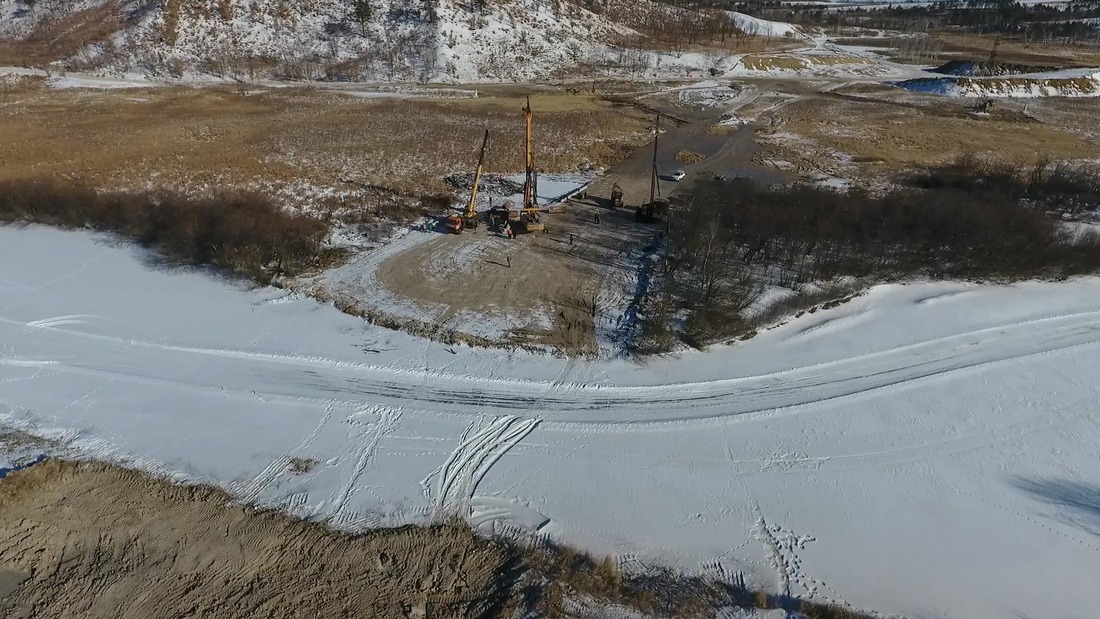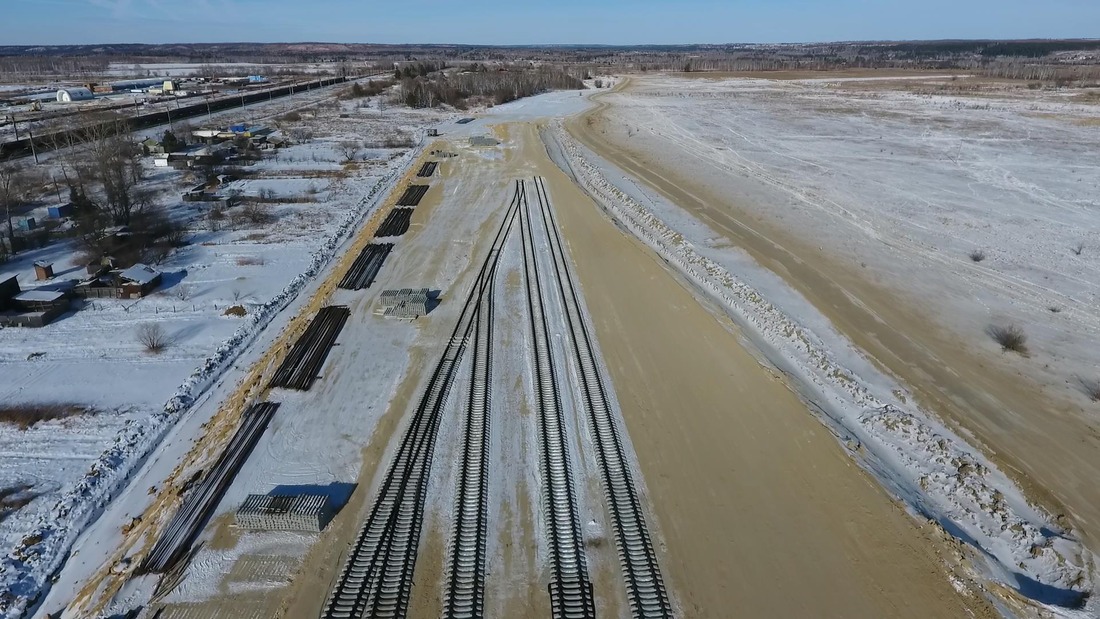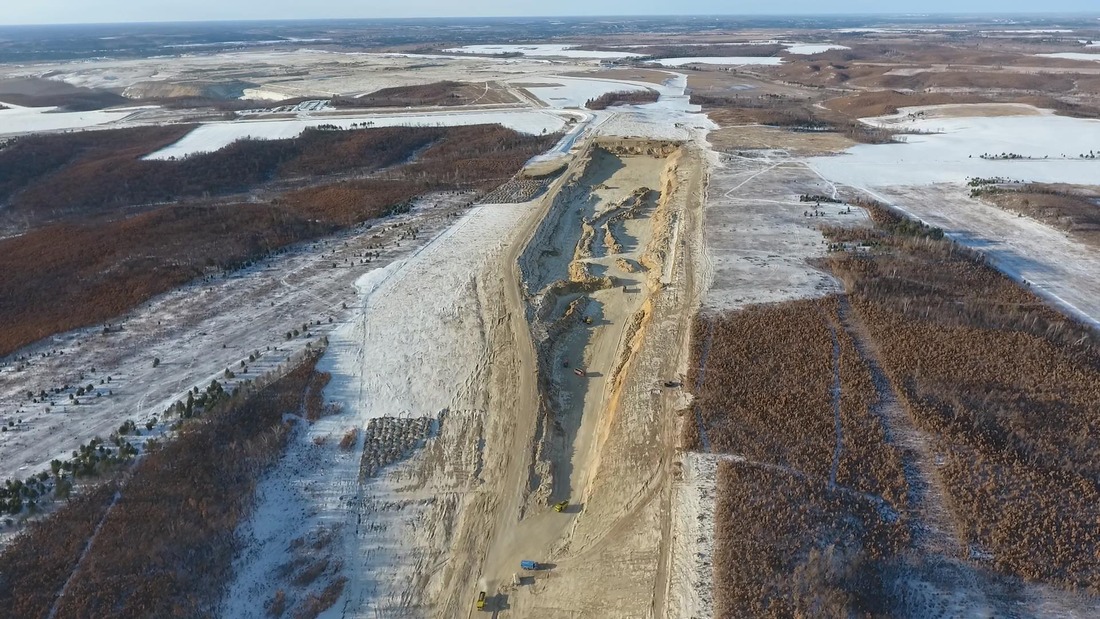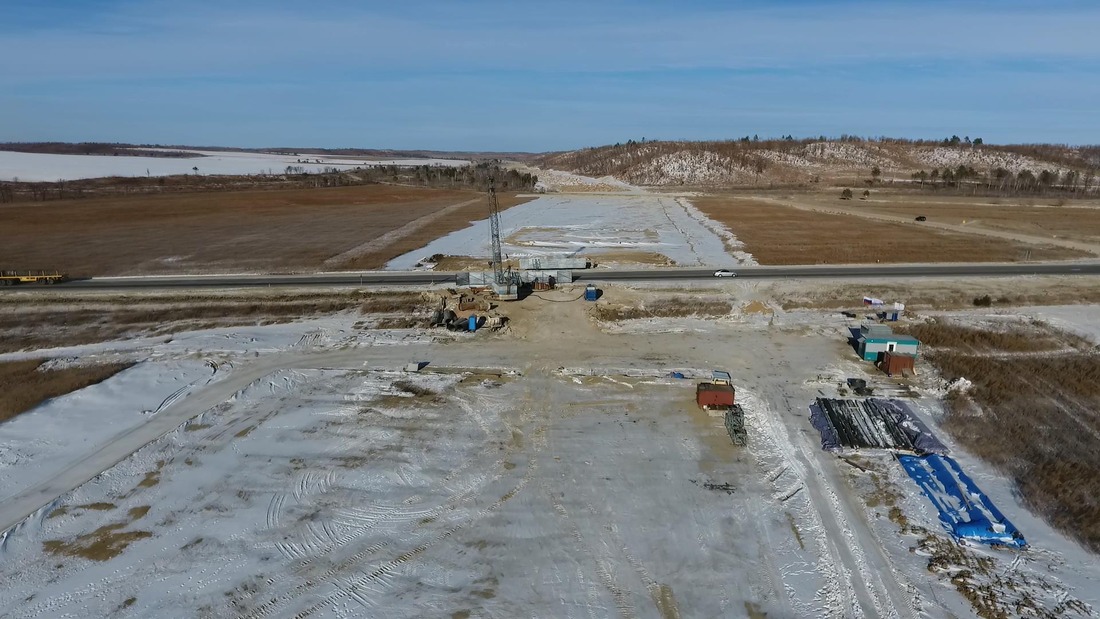Construction of Railway Bridge for Delivery of Cargoes to Amur GPP Commences
The first pile has been sunk into the foundation of the future railway bridge over river Bolshaya Pyora (Svobodnensky district) for delivery of the cargoes to Amur Gas Processing Plant (GPP).
Bridge over river Bolshaya Pyora is an important component of the railway to connect Amur GPP with Zabaikalskaya railway. This bridge will be 252 m long. It will have eight supports and seven spans.
Construction of other railway infrastructure facilities is in progress: around 45 km long non-public use railways, two railway stations Zavodskaya and Zavodskaya 2, overpass on Blagoveshchensk to Svobodny motorway.
Unique technical solutions are used for construction of the facilities. Specifically, the railway bridge design provides for a removable top section, which will enable transportation of the oversized equipment for Amur GPP on this motorway.
Altogether 225 workers and 104 items of equipment will be mobilized for construction of the railway infrastructure.
Background Information
Amur GPP will become Russia’s largest natural gas processing plant and one of the largest plants of this kind in the world. It will have a design capacity of 42 billion m3/yr of gas. The plant will also include the world’s largest facility for helium recovery with the capacity of up to 60 Mcmpa of gas. German company Linde will supply its technologies for the plant. The total area of the Amur GPP will amount to 800 ha.
Amur GPP is an important link in the process chain of natural gas supplies to China in the Eastern route. The plant will receive the feed multi-component gas from Power of Siberia gas pipeline from the Yakutsk and Irkutsk gas production centres currently developed by Gazprom with its Eastern gas program.
Limited Liability Company Gazprom pererabotka Blagoveshchensk (which is included in the Gazprom Group) is the Investor and Owner of the Amur Gas Processing Plant Project.
Construction is managed by NIPIGAZ, a leading Russian centre for engineering, procurement, logistics and construction management (included in the SIBUR Group).
Peak time for construction will be in 2019 when over 15,000 workers will be mobilized to the site.





Enlarged photo (JPG, 447 KB)